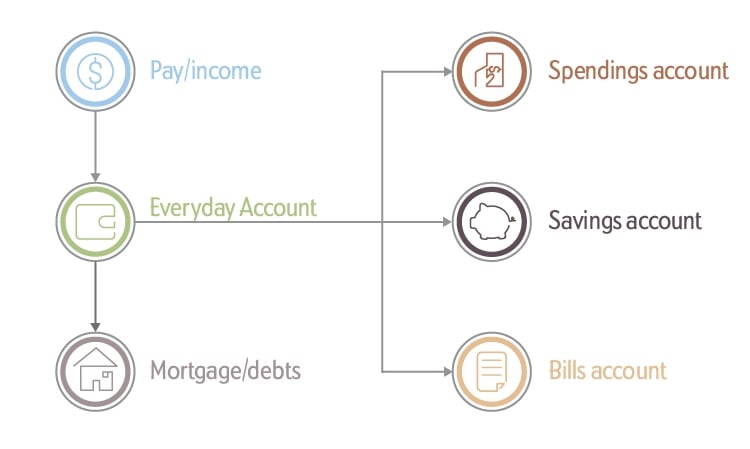 Sorting out a budget and managing your savings can often seem overwhelming, but it’s likely to save you a lot of time, stress and money down the track.
Sorting out a budget and managing your savings can often seem overwhelming, but it’s likely to save you a lot of time, stress and money down the track.
Use our handy guide to get set up and start budgeting like a boss!
Step 1: Manage incoming funds
Setting up an account portfolio that splits out your accounts will help ensure you have enough in the kitty to cover expenses and also have some money tucked away for a ‘rainy day’.
The first step is to have your pay and any other income deposited into one account. From here, you can transfer funds into secondary accounts to manage your savings and spending budget.
Step 2: Divide and conquer
After the money comes in and you take out any debt repayments (like a loan or credit card), it’s time to send the remaining funds to your secondary accounts. To keep it simple, we recommend starting with three separate accounts – spending, savings and billing.
Spending: Use this account for day-to-day activities like coffee, gifts, parking and entertainment.
Bills: Having a specific account set up for your bills can help you keep them in check. Regularly putting money aside for insurances, rates and quarterly utilities (like electricity, gas and water) will help ease the pressure when the due date rolls around. You can also factor in expenses like petrol, phone bills and internet if you’re not comfortable managing these from your spending account.
Savings: Treat this as your rainy day jar and keep it for emergencies or a big ticket item that you are saving for. As you see the balance increase and get into the habit of saving regularly, you’ll be more motivated to reach your savings goal.

The process of setting up an account may be quick and easy if you are able to apply online. Once your accounts are up and running, you can use online banking to set up regular debits that automatically transfer funds across on pay day.
An added benefit of breaking up your accounts is being able to choose the right option for your needs. If it’s been a while since you’ve done an account check-up, now is the time to make sure you’re getting the best value.
Step 3: Track your expenses
After your accounts are all set up, it’s time to crunch the numbers and figure out how much to put in each account. Refer back to previous bills for a rough estimate of how much you’ll need to fork out for the year. Divide this by your pay cycle (weekly, fortnightly, monthly) so you know how much to transfer each pay to cover your bills.
Once you know how much you have left after your debt payments and bills transfer, work out how much you can afford to spend and save. Set an amount for your savings and check any account requirements to make sure you qualify for interest.
This now just leaves everyday spending. Be honest with where your money is going and how much you spend on things like clothes, eating out and social events each week. Look back through previous transactions to help gauge a weekly figure.
If you find yourself short or want to boost the amount you are putting away, look at where you can cut back on your everyday spending and other ways to reduce expenses like auditing your subscriptions.
Once you’ve got the hang of it, you might like to split your bills and savings out further by setting up sub-accounts for specific goals or items. The options are endless but start simple and find a structure that works for you.
This article is intended to provide general information of an educational nature only. It does not have regard to your objectives, financial situation or needs and must not be relied upon as financial product advice. Before you act on this information, you should consider whether it is appropriate for your circumstances. Applications subject to credit approval and fees and charges are payable. Terms and conditions apply and are available on request. Information in this article is current as at the date of publication.




